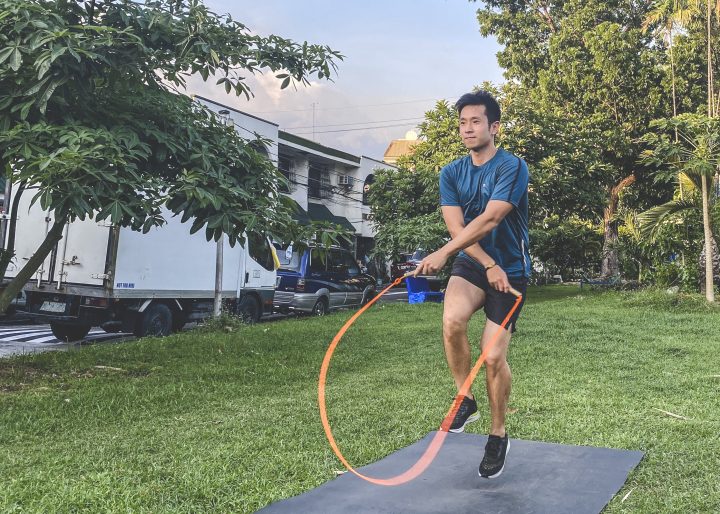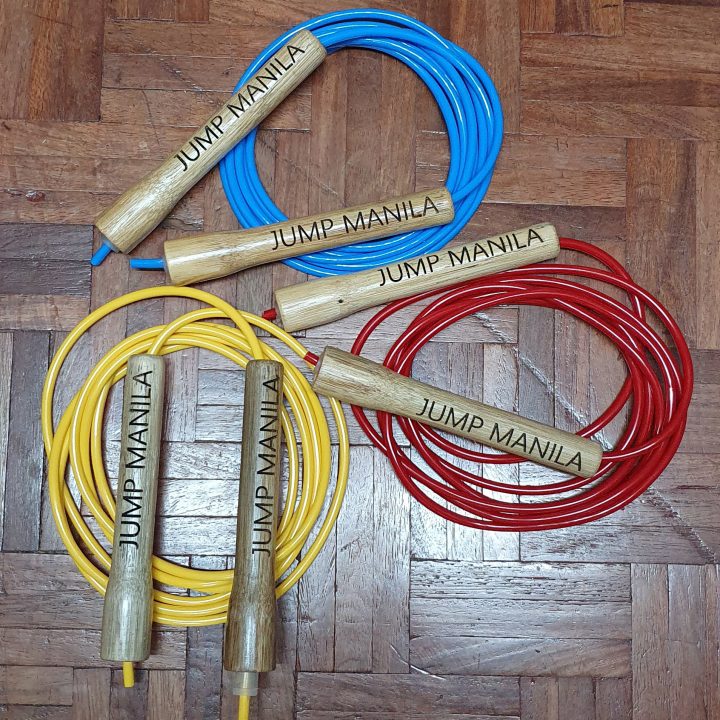
Looking for another quarantine bandwagon to jump into? Give jumping ropes a try!
Having much to stress about and little distractions, a ton of people began dabbling into hobbies previously unknown to them as a means to cope. Some became home cooks and bakers, others took into becoming plant parents, and some – with workout challenges abound, and all – started really getting into jumping or skipping ropes.
When it comes to jumping ropes, most would think that it’s just another form of exercise which is a good cardio substitute for running and others. But to Jump Manila’s Erwin Ng and his circle, jumping ropes is a sport. One that, according to him, doesn’t need much athletic skill to get into.
“Even I was overweight before I started jump rope,” is something the jump rope coach and founder of Jump Manila tells individuals who hesitate on starting because of health concerns. Besides the point of easy uptake for non-athletic individuals, Ng, who’s been working the ropes since 2017, also advocates it for weight-loss because it burns a ton of calories for an hour’s worth of exercise.
RELATED READ: Pinoy Fitness Calorie Facts
On top of that, it’s also really fun to do! Just check out this Jump Manila jump rope challenge for yourself:
Whether you’re thinking of jumping into the bandwagon as a fun distraction, for losing weight, or even to get competitive with the sport, Erwin Ng shares with Pinoy Fitness his tips for beginners here:

1. Start with a plastic or PVC jump rope with non-weighted handles
Regardless of whether you’re a novice to the sport or an advanced jumper, Ng suggests using the standard ropes that are 5 millimeters in diameter, or even the slightly heavier beaded ropes, if it’s just to get the basics down.
And among the three basic types of ropes (plastic, beaded, and wired ropes), plastic and beaded ones are usually recommended for beginners. These kinds of ropes, Ng says ‘have more feedback’ and are easier to spin compared to the are ultra-lightweight kinds like speed ropes.
He adds as well that even advanced jump rope enthusiasts still use the plastic or beaded types since they’re the easiest and most efficient to use for tricks. While speed ropes, on the other hand, are more preferred for use by CrossFit athletes, since their goal is mostly to be able to do continuous ‘double-unders’ during their workouts.
2. Make sure the rope is the right length for you
The standard length of ropes available in the market don’t always match the height of each user, and will sometimes be too long. These longer ropes, as users are often unaware of, are not only inefficient for practicing but can also lead to injury, cautions Erwin.
He recommends that you check the length of the ropes after purchase, and cutting it into a length that is more suitable for you. To do this, Erwin instructs that you:
a. Step on the middle of the rope with both feet
b. Check if the butt of the handles are level with the chest
c. If higher, cut the end of the rope and knot or lock the ends
You’ll know that the rope is of proper length also if only a small tip of the rope hits the floor when spinning it as demonstrated in this video:
This element of the rope helps to lessen the drag on the floor, as well as helps prevent tripping and subsequent injury, says Ng.
3. Observe proper form when jumping
Affirming the standard principles of maintaining proper form with any kind of exercise you do, the Jump Manila coach advises beginners that to always mind their forms when jumping so that they can perform their practices efficiently and with low risk for injury.
“It’s just like running…anyone can run, but there’s a right way of doing it so that you are efficient and can avoid injury,” adds Ng. For proper form, Erwin says beginners should always be mindful of the following:
● Posture – chest out, core always engaged
● Arm position – elbows facing backward and clipped to the sides, while forearms are bent at a 90-degree angle and slightly outward from the torso
● Knees – are slightly bent to act as a spring to cushion the impact of landing and always land on the balls of the feet
As an additional note on proper form, Ng also reminds beginners that the rope is rotated with wrist movements and should avoid elbow and forearm rotation as this is inefficient in swinging the rope.
4. Constant and consistent footwork practice
It’s all about mastering the fundamentals when it comes to any skill – one can’t get to do the advanced moves without first getting the basics down, and Erwin echoes it as much by advising his students to first practice their hand-foot coordination and to start doing this slowly.
Practice hand-foot coordination by counting beats while jumping. He explains that one count corresponds to one jump and rope-and-floor impact. You jump as you hear or feel the rope hitting the floor.
After developing good coordination, then you can start doing your footwork drills. Ng suggests to begin with the following:
● Side-swings
● Criss-cross
● Side-to-side
● Front-and-back
● Jumping jacks
● High knees
● Run in place
● Boxer skips
More tutorials and demonstrations for these can be viewed at Jump Manila’s Instagram account, @jumpmanila. Erwin also posts a variety of challenges with demonstration videos captured in slow motion so that you can carefully observe the hand and foot movements.
So how about it? Did this article help you to get started on jumping ropes? Let us know and share your jump rope videos with us over at the Pinoy Fitness Community Facebook Group!








